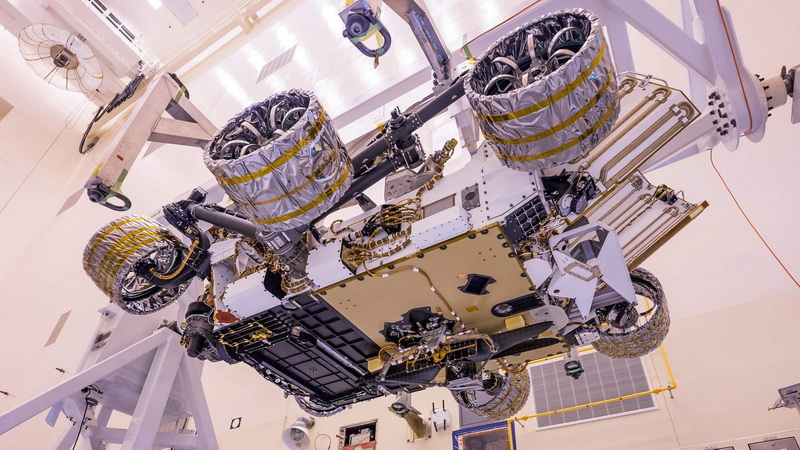This is a very important moment in human history. After more than a century of the first helicopter launch on Earth, NASA attends to launch a helicopter mission on Mars.
NASA sent this tiny helicopter called Ingenuity with their new Mars 2020 Perseverance Rover on last 30 July 2020 at 11:50 UTC to the red planet. It will be expected to land on Mars on Feb. 18, 2021. At this moment of writing, just only a few hours left for a complete landing mission.
NASA expects to use this helicopter to testing the technology to scout targets of interest on Mars and find the best driving route for future Mars rovers.
This tiny helicopter is most likely the same as a mini drone. It weighs only just 4 Pound (1.8Kg).
Flying a helicopter on Mars is a big challenge. Because Mars has a thin atmosphere. It has 99% less dense than Earth’s atmosphere.
To overcome this issue, It is designed with much larger blades and five times faster blade speed (2,400 RPM) by scientists. It has four carbon fiber blades arranged into two rotors that spin in opposite directions. Other than that, it has a box-shaped body, two cameras, and a navigation system.
Also, it has a solar panel to recharge the batteries because it consumes too much energy to stay warm during the night. The nighttime on Mars is so cold. The temperature drops to around minus 130 degrees.
Initially, this tiny helicopter attached under the rover, and once the rover landed the helicopter will be released to the ground for operation.

NASA’s scientists expect to fly up to five times during its 30-day test campaign. It will fly at altitudes ranging from 3–5 meters (10–16 ft) above the ground, 90 seconds flight time, and travel as far as 50 meters (160 ft) range from its starting point to back.

Everything will be controlled by the joystick from NASA’s scientist on earth. According to NASA, this is already a successful mission. They describe it as a “technology demonstration” for finding new capabilities of astrobiology mission.
However, we thank NASA’s effort and wish them success in their mission.


